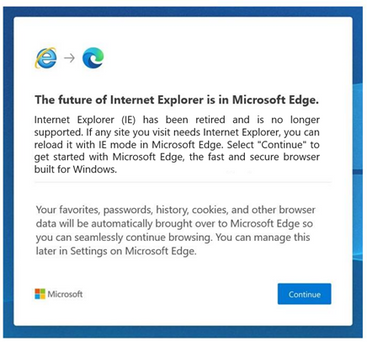
Microsoft is officially retiring its famous Internet Explorer browser, which debuted in 1995 alongside the Windows 95 operating system. People who used computers on a regular basis in the 1990s and early 2000s, whether at home, at school, or at work, are likely to feel nostalgic about Internet Explorer. However, Microsoft’s decision to discontinue Internet Explorer was primarily motivated by the fact that web developers were less likely to make their sites compatible with Internet Explorer.
To recall, support for Internet Explorer (shortly IE) was removed from Microsoft 365 on August 17, 2021, and Microsoft Teams support was removed on November 30, 2020. According to a FAQ post from Microsoft, Microsoft Edge with IE mode is officially replacing the Internet Explorer 11 desktop application on Windows 10.

Data from Internet Explorer, such as bookmarks, passwords, and favorites, will be transferred to Edge during the redirect process, and a toolbar option will be provided to allow quick access to Edge’s special mode, which Microsoft has built into the browser. Many legacy websites still use ActiveX controls that can only be accessed in IE mode. Internet Explorer is being phased out of all currently supported versions of Windows 10, including Home, Pro, Enterprise, Education, and IoT.
In addition, IE will be phased out in two stages to ensure a quality-driven exit. After June 15, 2022, devices will be gradually redirected from Internet Explorer to Microsoft Edge in the first phase, the redirection phase. The Windows Update phase is the second phase of retirement. After the redirection phase is completed, IE will be permanently disabled on all devices with Windows platforms that are in-scope for IE retirement via a future Windows Update.
You can check Microsoft’s FAQ post for any other queries regarding the matter.
